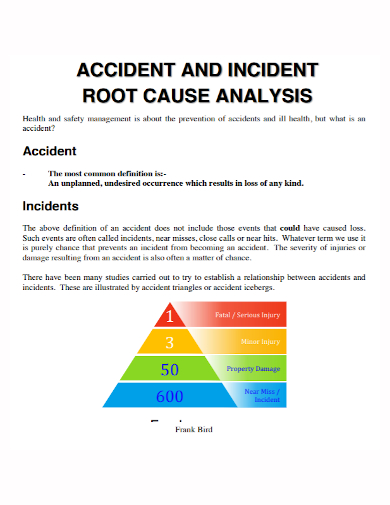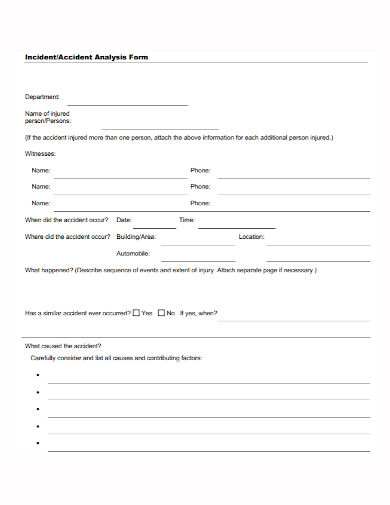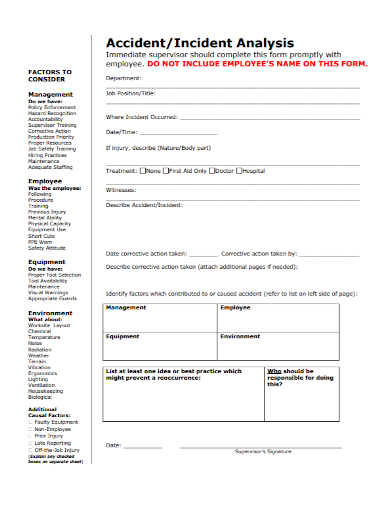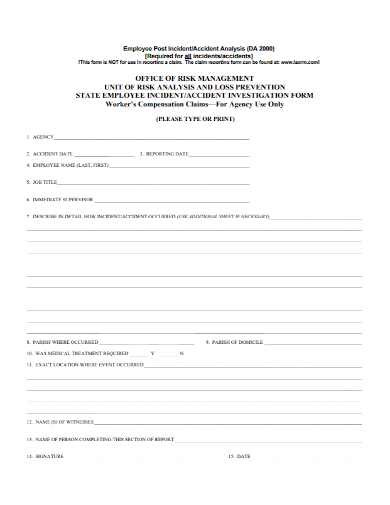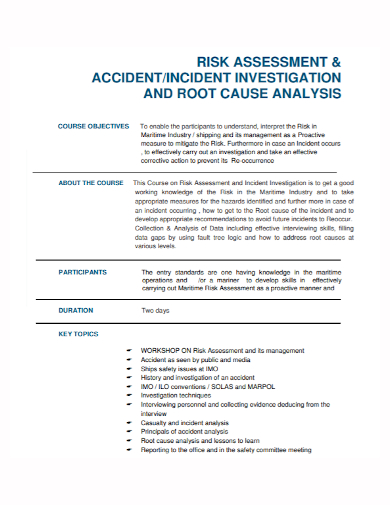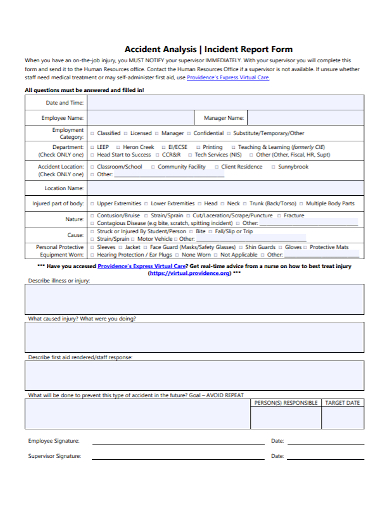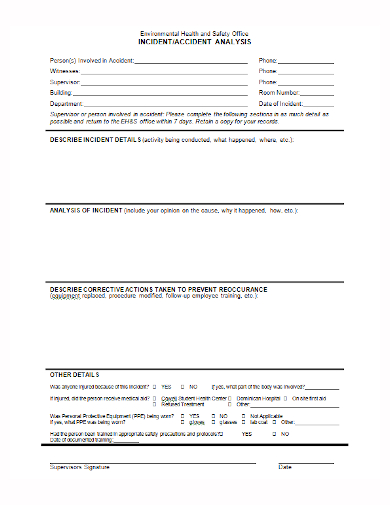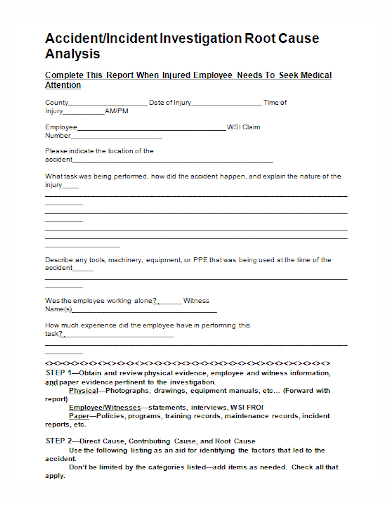Before you are going to conduct an analysis, you have to record all the necessary information as accurate as possible. You should be able to document what had happened, when it happened, why it happened, who were involved in the scenario, where it happened, and other relevant question. You have to be consistent when it comes to providing a documentation. Secure proper policies and procedures as it will help you in ensuring a meaningful analysis. Always remember that the more information you have, the more you will have more chances of comparing and coming up with a meaningful conclusion. Know the level of sensitivity of your information. Having one of the most effective incident analysis or management system will allow you to sort out data at specific levels. In this article, you will be able to know more about incident/accident analysis and how to create one.
What is an incident analysis? By definition, it is something that considered to be a structured process in order to identify what happened, how and why the incident happened, what needs to be done in order to reduce the risk and to make everything safer, and what you learned based on the incident. It is also considered to be an integral activity that allows you to represent various processes.
10+ Incident/Accident Analysis Samples
1. Incident/Accident Analysis
2. Incident/Accident Root Cause Analysis
3. Incident/Accident Analysis Form
4. Incident/Accident Investigation Analysis
5. Incident/Accident Management Analysis
6. Employee Post Incident/Accident Analysis
7. Risk Assessment Incident/Accident Analysis
8. Incident/Accident Report Analysis
9. Client Post Incident/Accident Analysis
10. Health and Safety Incident/Accident Analysis
11. Incident/Accident Investigation Root Cause Analysis
How to Conduct an Effective Incident/Accident Analysis?
- Know the whole story – this is the first step in analyzing an incident. You have to gather as many information as you can. You can collect evidences through gathering photos, videos, audio recording, and other relevant evidences that you can use for the analysis. Interview the subject, the victim, and the witnesses. Lastly, you have to review the records including those that are in emails, computer history, policies, and procedures.
- Try conducting a root cause analysis – start conducting a root cause analysis by using the timeline of events. When we say root cause analysis, it is the process of identifying what led to a certain event. In order to properly conduct this one, you have to identify the factors that contributed to the major events in your timeline. After that, ask yourself if why you think each of those contributing factor occurred.
- Identify the patterns – if there are certain conditions that appear to happen once or more than once, this would probably mean that it can happen again. Part of analyzing an incident is to evaluate the historical case data.
- Learn how to correct and prevent issues – by the time that you have already identified the root cause of the incident, you have to think of best solutions on how to prevent these issues and repeated accidents. Determine any corrective actions. This may include updating your old policies, changing your training content and its frequency, replacing equipment, and installing safety measures. The final step in analyzing incidents is to decide what preventive actions to take. This will help you in addressing your problem before they can occur. Some preventive actions include creating emergency plans, implementing new method for employee training, conducting internal audits, reviewing policies and procedures, and performing maintenance on equipment especially to the data systems.
FAQs
What are other tips that you should consider when making an incident analysis?
You have to answer the basics, share security information, track costs, set yourself up to quickly generate reports, consider the investigative relevance, measure current performance, address operational effectiveness, support knowledge-based decisions, focus on pattern analysis, and use the results to manage the risks.
What are the incident analysis resources?
It includes removable media, forensic software, digital cameras, and other relevant resources used for documentation, network diagrams, etc.
Conducting an analysis after every incident occurred will be a huge help to your organization in getting a detailed picture of the potential risks and opportunities. This will also help you in building an effective program that will decrease the number of incidents to boost safety and security for your entire organization. If you want to see more samples and format, check out some incident/accident analysis samples and templates provided in the article for your reference.
Related Posts
FREE 9+ Sample Trend Analysis
FREE 5+ Market Research & Analysis Report Samples
FREE 3+ Preschool Incident Report Samples
FREE 36+ Incident Reports
FREE 17+ Sample Security Reports
FREE 13+ Sample Security Incident Reports
FREE 11+ Sample Crime Reports
FREE 10+ Job Incident Report Samples
FREE 10+ Accident Sketch Parking Lot Samples
FREE 10+ Teacher Incident Report Samples
FREE 8+ Investigation Summary Report Samples
FREE 12+ Incident Root Cause Analysis
FREE 12+ Root Cause Analysis Templates
FREE 10+ Student Accident Report Samples
FREE 10+ Hospital Incident Report Samples


